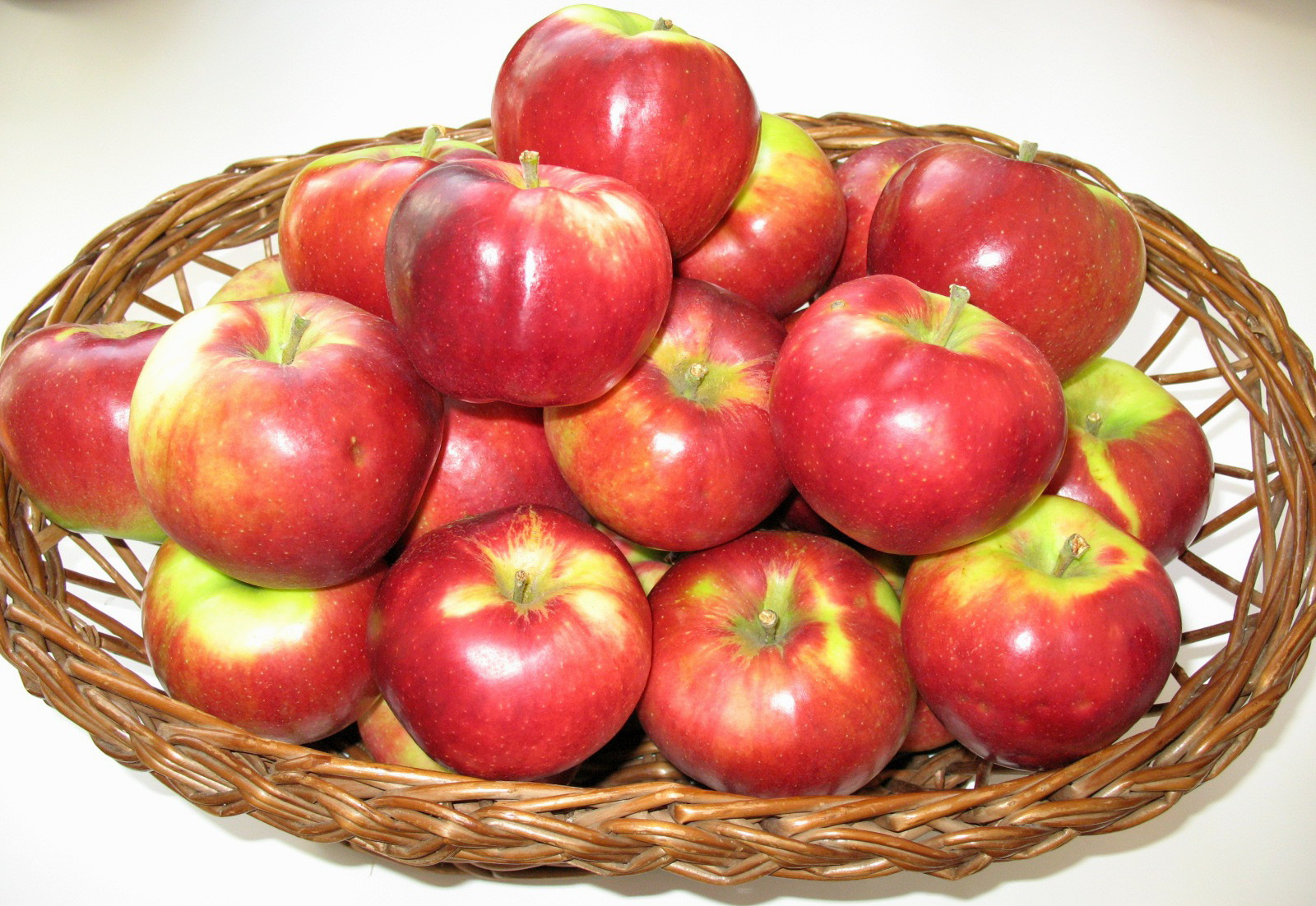‘Saruman’ Apple Cultivar
Radu SESTRAS1) , Adriana SESTRAS1,2) , Eugenia HARSAN2), Adrian BARBOS2)
1) University of Agricultural Sciences and Veterinary Medicine, 3-5 Manastur Str., Cluj-Napoca 400372, Romania; rsestras@yahoo.co.uk
2) Fruit Research Station, 5 Horticultorilor Str., Cluj-Napoca 400457, Romania; asestras@yahoo.com; harsane@yahoo.com; adrianbarbos2000@yahoo.co.uk
Cited: SESTRAS R, SESTRAS A, HARSAN E, BARBOS A (2010). ‘Sauron’ Apple Cultivar. Notulae Scientia Biologicae 2(2):135-136. http://notulaebiologicae.ro/nsb/article/view/468
Abstract. The apple cultivar ‘Saruman’ was obtained at Fruit Research Station Cluj, Romania (FRS Cluj), and homologated in 2007. ‘Saruman’ was released by hybridization between ‘Cluj III-VI-5-26’ selection (‘Parmain d’Or’, open pollinated) and ‘NJ 46’. The trees are vigorous, spreading shape, and with medium crop yield. The fruits have large size, conic shape and mostly red (purple) coloration; they have white flesh with a sweet, crisp, aromatic flavour and low acidity. Fruits become ripe in the last decade of August, first decade of September and the fruits are proper for dessert and well suited for cooking, applesauce, cider, pies.
Additional index words: breeding, Malus domestica, genotypes, peculiarities, description
Introduction
Apple breeding at Cluj-Napoca, Romania, started since 1953 when Fruit Research Station (FRS Cluj) was founded. On time, here were activated several generations of breeders, like R. Palocsay (which made first hybridizations before FRS was initiated), S. Oprea, V. Ghidra, R. Sestras, M. Dejeu, I. Chis, A. Barbos, A. Sestras. The most well-known and spread cultivars of apple created in Cluj were ‘Aromat de vara’, ‘Ardelean’, ‘Ancuta’, ‘Feleac’ and ‘Rosu de Cluj’. In 2005 were homologated four new apple cultivars, as following: ‘Auriu de Cluj’, ‘Estival’, ‘Precoce de Ardeal’, ‘Productiv de Cluj’. In 2007, the new apple cultivar ‘Saruman’ was homologated (Sestras et al., 2006; Sestras et al., 2008).
Description
The principal characteristics of flowers, fruit, tree and leaves are described using some criteria after UPOV Guidelines (2005).
Origin
‘Saruman’ was obtained by artificial pollination between ‘Cluj III-VI-5-26’ elite (‘Parmain d’Or’, free pollenization) x ‘NJ 46’ at Fruit Research Station Cluj and was homologated in 2007. The new cultivar received official ISTIS Romanian national network (The State Institute for Variety Testing and Registration) certificate number 8419/29.11.2007, authors: R. Sestras, E. Harsan, A. Barbos, M. Dejeu.
Flower
Flower bud colour: dark pink
Petal colour: white to white-pink, with streaks of pink shade.
Corolla size: large, 62-64 mm in diameter; when flower is open, the petals position is superimposed.
Petal size: large, 26 mm length and 24 mm width in medium.
Petal shape: oval, and the base of petals is truncated.
Flower – arrangement of petals: overlapping.
Flower – position of stigmas relative to anthers: same level.
Stamen size: 11 mm; the stamens colour is white-yellow. Pollen colour: yellow-ochre.
Pistil size: 7-8 mm, with greenish yellow.
Time of beginning of flowering: early.
Fruit
Fruit shape: conical. Height-diameter ratio is small (0.7-0.8).
Fruit size: large, with a weight of 200-220 g, height 62-68 mm and 82-89 mm in diameter.
Peduncle: medium length (16-25 mm) and thickness (2-3 mm).
Fruit skin: thin, smooth and slightly glossy. Bloom of skin is strong.
Background colour of the fruit: green-yellow, with intense red purple coverings and narrow stripes.
Lenticels: small size; their number is medium.
Flesh: white, crispness, juicy, with sweet-sour taste and excellent flavour.
Flesh firmness: medium.
Seminal lodges: long, deep, ovoid and completely open.
Season: midseason, picking date at Cluj-Napoca, in Central Transylvania, Romania, between 25 August and 10 September. Time of eating maturity is medium, as in ‘Elstar’, ‘Gala’, ‘Honeycrisp’ (UPOV, 2005).
Usage: dessert and industrialization as jam, marmalade, juice etc.
Tree
Growth: the vigour of trees is strong.
Tree type: ramified.
Tree habit: architectural ideotype of tree is spreading.
Type of bearing: on spurs and long shoots.
Skeleton branches: numerous, short and long branches, with medium length of internodes.
Colour branches of a year: brown-green shades of gray than overlapping; strong pubescent branches.
Lenticels: medium, 2 mm, rare, often to the base of branches.
Production: medium productive and annually fructification.
Response to fungal diseases: moderate response to apple scab (Venturia inaequalis (Cke.) Wint.) attack, and relative susceptible to powdery mildew (Podosphaera leucotricha (Ell. et Everh.) Salm.).
Leaves
Leaf blade intensity of green colour: light green, mid-pubescent on the underside.
Leaf blade size: 66-90 mm long and 53-55 mm wide.
Leaf blade incisions of margin (upper half): serrate type 1, the same as the varieties ‘Elstar’, ‘Gala’ (after UPOV Guidelines, 2005).
Petiole: 39-40 mm length; intensity of anthocyan coloration is reduced.
Availability
‘Saruman’ is licensed in Romania by the ISTIS and is presently available from FRS Cluj nursery. Plant Patent is pending.
Literature Cited
Sestras R., S. Oprea, A. Barbos, A. Sestras, and M. Dejeu. 2006. Recent advances in apple breeding at Cluj-Napoca, Romania. Bull. Univ. Agric. Sci. Vet. Med. Cluj-Napoca. Horticulture 63:405 (abstr.).
Sestras R., A. Sestras, A. Barbos, and E. Harsan. 2008. New cultivars obtained at Cluj-Napoca, Romania: ‘Saruman’ and ‘Sauron’ (apple); ‘Arvena’ (pear). Modern Variety Breeding for Present and Future Needs. Prohens, J. & M.L. Badenes (eds.). Ed. Univ. Politécnica Valencia, Spain pp. 722-723 (abstr.). Proc. 18th Eucarpia Gen. Congr. 9-12 September 2008.
UPOV. 2005. Guidelines for the Conduct of Tests for Distinctness, Uniformity and Stability. Apple (Fruit Varieties) UPOV Code: MALUS_DOM (Malus domestica Borkh.). UPOV, TG/14/9, Geneva.

